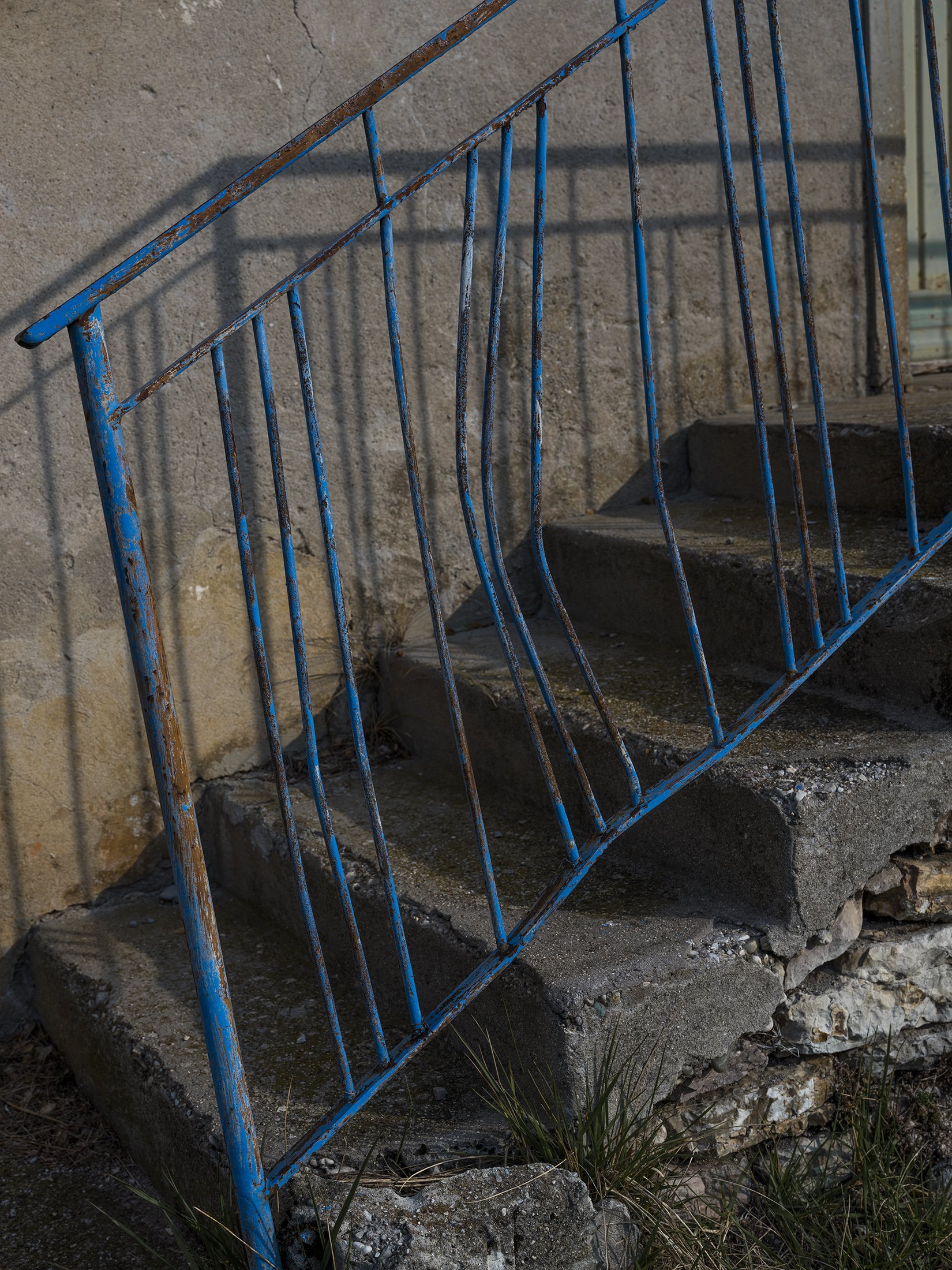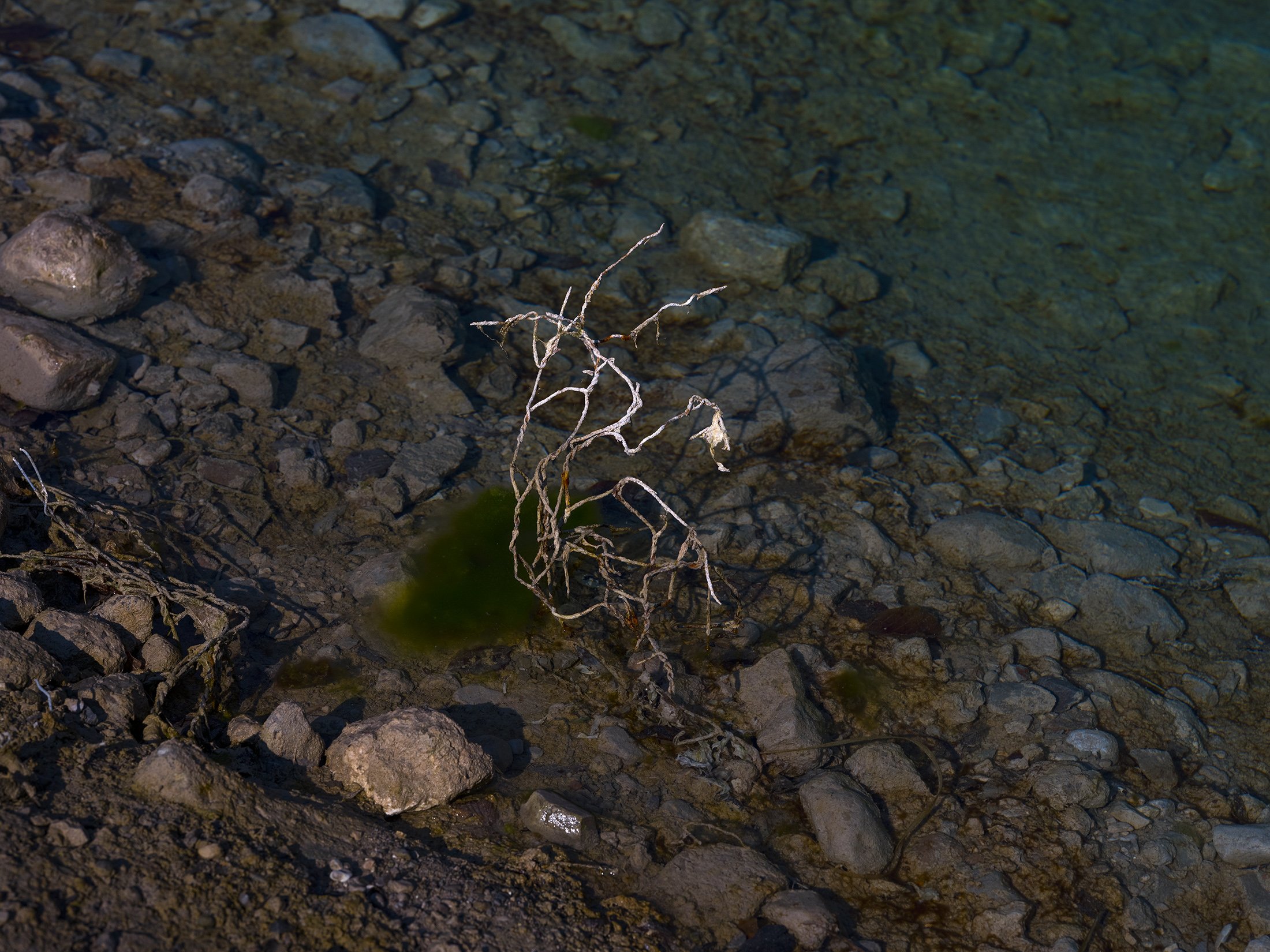Una notte,
la montagna è caduta
“over days, over nights enabling her to capture what daylight tends to conceal, she relentlessly tracks down the clues to a possible survival — but of what, of whom? a state of suspension nestled in all that, half a century later, continues to stand behind the cul-de-sacs crammed with brambles”
Marcelline Delbecq
Contours (extract)
for ‘Una notte, la montagna è caduta’
- - -
I can picture the night of October 9,1963, at 10.38pm. A clear full moon night, shining over the waters of the Vajont Dam, and a deep silence covering up the valley.
I cannot picture the insane violence that occurred right after. Reading testimonials of survivors – trying to tell the landslide noise, how they were thrown in the air before the tsunami’s impact, and losing their whole family in the space of a few seconds, buried forever – my mind balks, unable to consider the madness of an event whose closest experience would certainly be that of the end of the world.
In Vajont, I photographed as if I was picking up stones on a path. Trying to assemble a complex rebus, building a tale that I could possibly understand, each photograph became the small investigation of an enigma : are they traces of the disaster, or premonitory signs of it?
In Vajont, time disappeared, only space was left.
“au fil des journées comme des nuits, plus propices à saisir ce que la lumière diurne tend à masquer, elle traque sans relâche les indices d’une possible survivance — mais de quoi, de qui ? cet état de suspension niché au creux de tout ce qui, un demi-siècle plus tard, continue de tenir debout derrière les culs-de-sac envahis de ronces”
Marcelline Delbecq
Les Contours (extrait)
pour “Una notte, la montagna è caduta”
- - -
J'imagine la nuit du 9 octobre 1963, à 22h38. Une nuit de pleine lune, limpide, brillant sur les eaux du barrage du Vajont, un silence profond recouvrant la vallée.
Il m'est impossible d'imaginer la violence de l'instant d'après. Lisant les témoignages des survivants - tentant de raconter le bruit du glissement de terrain, ou la manière dont ils ont été expulsés dans les airs avant l'impact du tsunami, perdant leur famille en un instant, enterrés pour toujours - mon esprit se dérobe, incapable d'appréhender la folie d'un événement dont la plus proche expérience serait certainement celle de la fin du monde.
Dans le Vajont, j'ai photographié comme si je ramassais des cailloux. Essayant d'assembler les pièces d'un rébus complexe, de construire un récit que je pourrais peut-être comprendre, chaque photographie est devenue l'enquête d'une énigme : est-ce une trace de la catastrophe, ou bien un signe prémonitoire de celle-ci ? Dans le Vajont, le temps a disparu, il ne reste plus que l'espace.
- - -
This series is part of the collective Calamita/à project curated by Gianpaolo Arena and Marina Caneve, aiming to investigate the Vajont catastrophy that happened in 1963 in the Dolomites mountains, Italy, killing 2000 people. This project was carried out thanks to the support of FAST-Strategia Fotografia.
Ce travail fait partie du projet collectif Calamita/à conçu par Gianpaolo Arena et Marina Caneve, explorant la catastrophe du Vajont ayant eu lieu en 1963 dans les Dolomites en Italie, tuant 2000 personnes. Projet réalisé grâce au soutien de FAST-Strategia Fotografia.
































